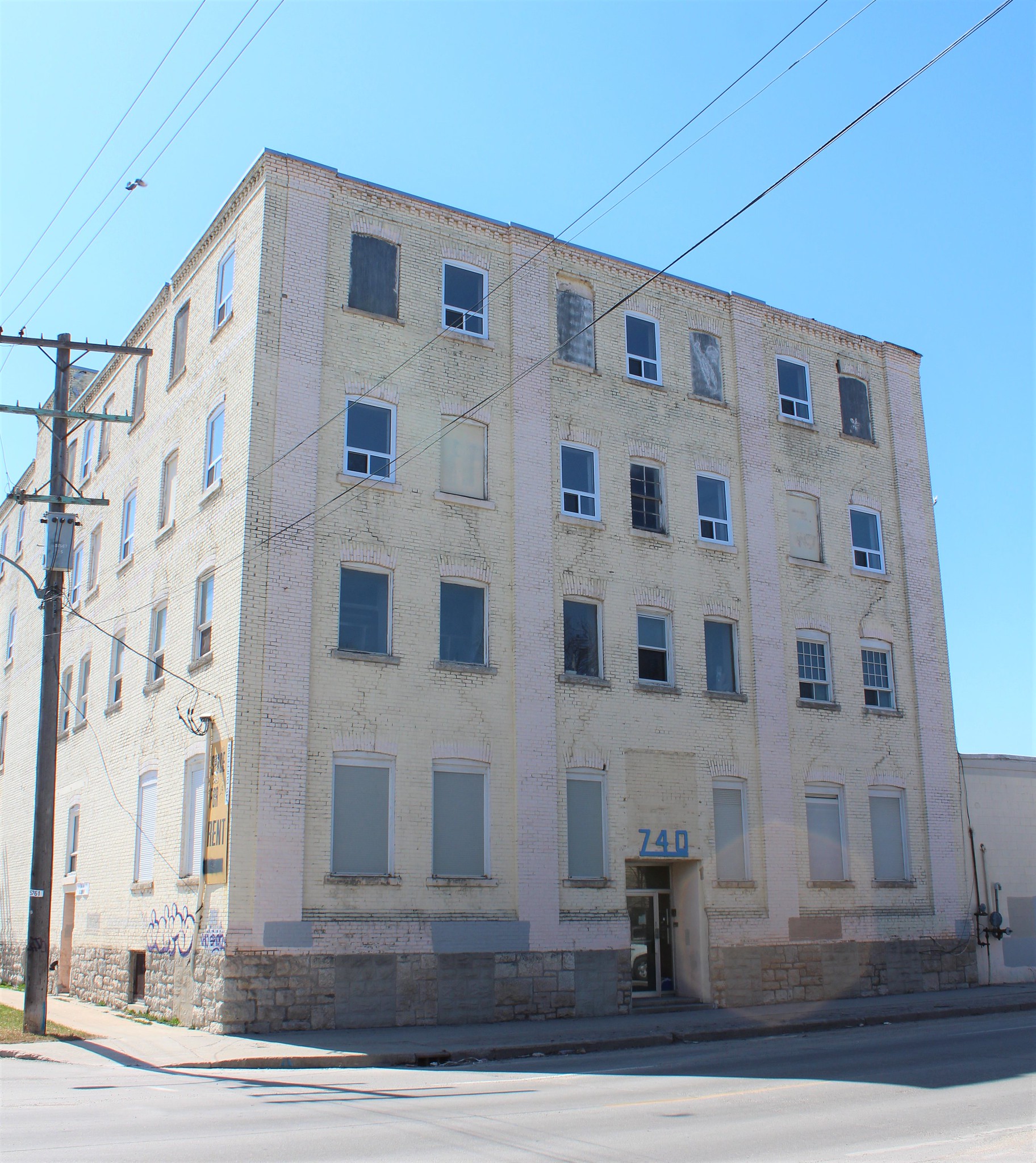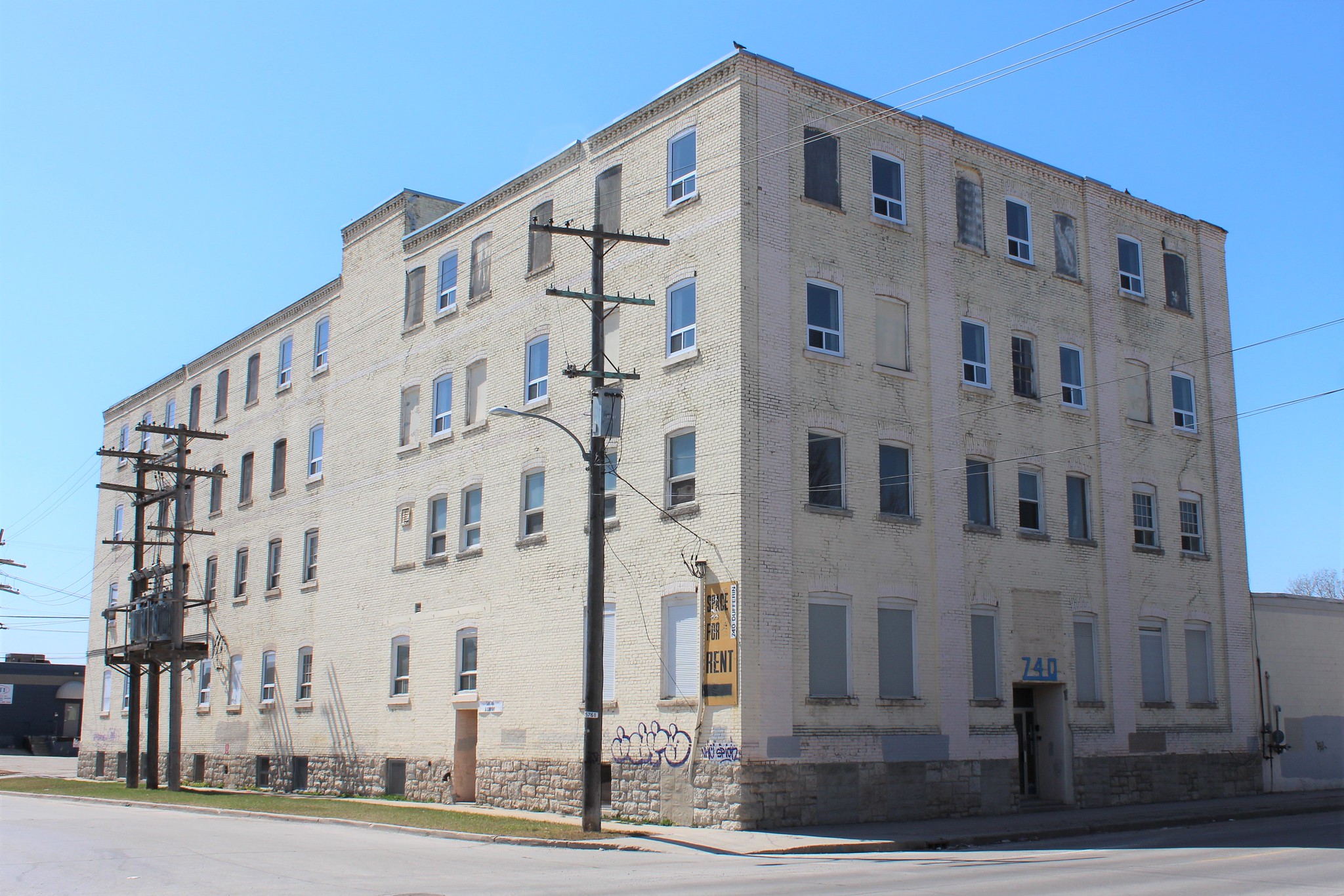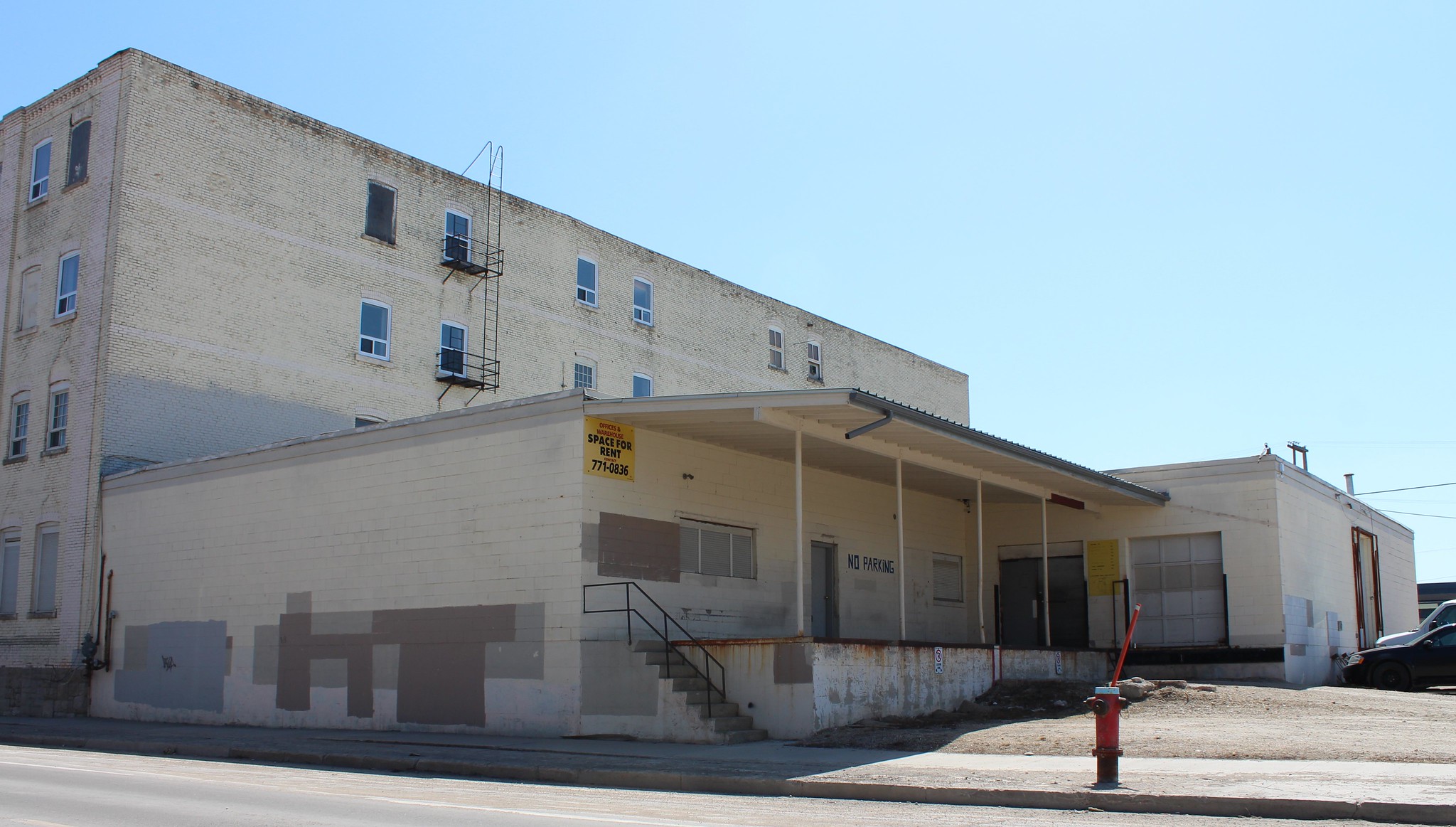Address: 740 Dufferin Avenue
Constructed: 1907
Cost: $40,000
Architect: Herbert E. Matthews
Contractor: Sveinn Brynjolfsson
The original Winnipeg Casket Company was created in July 1903 and operated from a two-storey factory on Manitoba Avenue until it was destroyed by fire in 1904.
In early 1907, a new company by the same name was created under directors: president W. H. Antes of Des Moines, Iowa; , F. C. Bell of Spencer, Iowa and Charles H. Enderton, C. P. Bell, Charles W. Fillmore and P. W. Fillmore from Winnipeg. It appears that C. P. Bell also acted as factory manager.
Weeks later, the company took out a $40,000 building permit for a new factory on Dufferin Avenue and Parr Street designed by Herbert E. Matthews.
Matthews had well over 100 projects to his name in his native London, Ontario before setting up practice in Winnipeg in 1905. Primarily a residential architect, this appears to have been one of his largest Winnipeg commissions. His other non-residential works, which came years later, include the original St. Matthews Church - West End Cultural Centre (1909); Granite Curling Club (1912) and the Rothesay Apartments (1912).
The general contractor for the project was Sveinn Brynjolfsson. He came to Winnipeg from Iceland in the 1890s and like many of his countrymen set up shop as a mason.
The brick and stone 60 x 150 foot building stands four storeys tall with a full basement. Adjacent to it was an engine house and a 42 x 50 foot wood drying kiln, both long since demolished.
Perhaps because of the nature of its work, the exterior is devoid of ornamentation, something noted by a Free Press reporter writing about its completion: "...its appearance is that of a hundred other warehouses in Winnipeg and the outside calls for no special comment.”
An odd feature about the building is its address, or lack of it. For many decades it is listed in the Henderson Directory not by street number but rather as “Dufferin, corner of Parr” which is very unusual as the area was quite urbanized and the buildings around it had numbers. The odd time the business was mentioned in newspapers, the intersection is also used.
March 5, 1908, Winnipeg Free Press
Disaster nearly struck in March 1908 when a fire in the adjoining kiln got out of control and began to spread into the building's workshop. Crews from four fire halls were called in fight the blaze.
They managed to get the steel fire doors separating the kiln and building closed, containing the blaze. In the end, damage was limited to $5,000 mostly to the kiln and the destruction of five rail cars of lumber parked next to it.
Company Letterhead ca. 1928, toeppner .ca
In 1913, there was a shakeup in Canada's casket industry when five companies in Ontario, Quebec, Nova Scotia and the Winnipeg Casket Company merged to form a national entity called Dominion Manufacturers based in Toronto. It dealt in caskets and a full range of undertaking supplies.
One of the companies, Semmens and Evel of Hamilton, already had a plant branch in Winnipeg.
For more than a decade all three companies were listed at 740 Dufferin Avenue. It appears that Winnipeg Casket Co. operated under its own trade name in the local market until at least the 1960s.
The new Winnipeg Casket Company was called into service not long after the merger when it was contracted to provide caskets for the nearly 200 victims of the Hillcrest, Alberta mine disaster. The factory worked around the clock to process the order.
May 1, 1919, Winnipeg Tribune
The company also made the news in 1919 when its 60 casket makers walked off the job during the Winnipeg General Strike after the company refused to recognize its recently created union. They were demanding better wages than the industry average of $9.94 per week.
Being such a small group there wasn't any follow-up media stories about how things went for them.
August 29, 1944, Winnipeg Tribune
There was at least one employee of Winnipeg Casket who lost his life on the battlefield.
Painter Robert Dey, 30, of Midwinter Avenue enlisted with the RCAF in 1942. The following year he went overseas leaving behind a wife.
In July 1944, his bomber was shot down near the village of Ferte-Saint-Cyr, France but his charred remains could not be immediately identified. He was originally listed as "missing on active service after air operations", then "missing and presumed dead."
Eventually, he was identified and he is buried in Orleans Main Cemetery at Loiret, France.
1915 catalogue ad, (source)
The company manufactured and warehoused caskets at this site until at least the mid-1960s. The fact that it didn't advertise to the general public makes it difficult to determine when it went out of business.
Through the late 1960s and 1970s the only mention of the company in newspapers was in obituaries for former workers. Some were long-term employees such as Alexander Smith, who changed his name from Schmidt in 1944, who began as a woodworker and worked his way up to factory manager, spending 52 years with the company.
January 7, 1983, Winnipeg Free Press
By 1983, the vacant, unheated building was still owned by Dominion Manufacturing and had been up for sale for "three or four years" according to a company spokesperson.
In January of that year, a pipe burst on the fourth floor which caused extensive water damage. It was one of a number of pipe breaks over the years.A spokesman for the company called the building "jinxed" and said that the latest burst would likely cause them to significantly reduce the sale price.
By July 1983, ads appear for Eldar Window Industries Ltd. It featured a showroom on the main floor and warehouse upstairs. The company only lasted until 1985 when it was replaced by Factory Outlet Furniture.
Through the late 1980s and 1990s the building was was increasingly subdivided into a myriad of office, workshop and warehouse spaces, which is how it remains today.
Related:
For more images of 740 Dufferin.










The caskets were sold by funeral homes around Winnipeg. It was possible to choose and prepay the casket and mortuary service. That paperwork included a separate casket page from this factory,
ReplyDelete